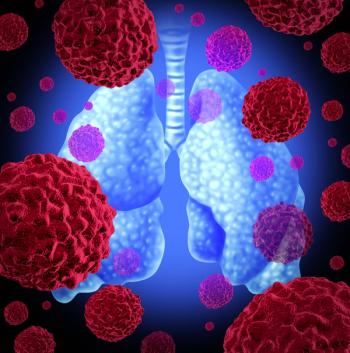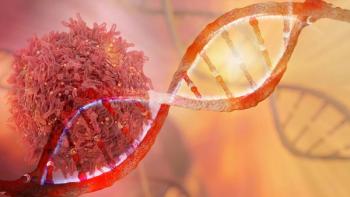
- ONCOLOGY Vol 16 No 11
- Volume 16
- Issue 11
Update: AIDS United States, 2000
Since the implementation of highly active antiretroviral therapy (HAART) in the United States in 1996, the number of persons diagnosed with acquired immunodeficiency syndrome (AIDS) and the number of deaths among persons with AIDS have
Since the implementation of highly active antiretroviraltherapy (HAART) in the United States in 1996, the number of persons diagnosedwith acquired immunodeficiency syndrome (AIDS) and the number of deaths amongpersons with AIDS have declined substantially. As a result, the number ofpersons living with AIDS has increased.
This report describes changes in AIDS incidence, prevalence,and deaths among persons with AIDS from January 1996 to December 2000.Surveillance data indicate a slowing of declines in new AIDS diagnoses,continued declines in deaths among persons with AIDS, and increases in thenumber of persons living with AIDS. These findings indicate that AIDS continuesto place a burden on the health-care system in the United States and that accessto medical and preventive services must be improved to reduce the public healthimpact of AIDS.
Reporting Procedures
AIDS surveillance is conducted in all states, the District ofColumbia, and US territories; cases are reported to the Centers for DiseaseControl and Prevention (CDC) by using a standard definition and form. Inaddition, most states conduct human immunodeficiency virus (HIV) surveillance.To estimate AIDS incidence and deaths of persons with AIDS throughDecember 2000, the CDC adjusted reported cases for reporting delays. TheHIV-exposure categories for cases reported initially without risk were estimatedfrom historical patterns of risk ascertainment and reclassification. AIDSprevalence was estimated by subtracting cumulative deaths from cumulative AIDSincidence.
Declining Trend
AIDS incidence increased rapidly throughout the 1980s, peakedin the early 1990s, and then declined (Figure 1). The peak of new diagnoses in1993 was associated with expansion of the AIDS surveillance case definition. In1996, sharp declines in the incidence of AIDS were observed for the first time.During 1998-1999, declines in AIDS incidence began to level. During 1999-2000,essentially no change in AIDS incidence was observed; an estimated 40,907 newAIDS cases were diagnosed in 1999, and an estimated 41,113 in 2000.
During 1996-2000, the incidence of AIDS declined in theWest; declined and then leveled in the South, Midwest, and US territories; anddeclined and then increased in the Northeast. During the same period, AIDSincidence declined sharply and then slowed among whites and declined more slowlyand then leveled among blacks, Hispanics, and Asians/Pacific Islanders. During1998-2000, incidence increased among American Indians/Alaska natives from 152in 1998 to 183 in 2000. AIDS incidence declined sharply and then slowed amongmen who have sex with men (MSM) and injection-drug users. Incidence continued todecline among MSM who also were injection-drug users. Among persons exposedthrough heterosexual contact, incidence declined slowly during 1996-1998 andthen increased from 10,258 in 1999 to 11,136 in 2000.
Death Rates
As shown in Table 1, during 1996-1997, the estimated numberof deaths among persons with AIDS declined 42%; during 1998-2000, declineswere smaller (5% during 1998-1999 and 10% during 1999-2000). During 1996-2000,the number of deaths declined in the Northeast, West, and Midwest; during 1996-1999,deaths declined in the South and US territories, and then leveled during 1999-2000.The number of deaths declined in all racial/ethnic groups and among MSM, maleand female injection-drug users, and MSM/injection-drug users. During 1996-1998,the number of deaths among men and women with AIDS attributed to heterosexualcontact declined and then leveled during 1999-2000.
Prevalence Rates
AIDS prevalence has increased steadily over time. As ofDecember 31, 2000, an estimated 337,731 persons in the United States were livingwith AIDS (Figure 1). Of these, an estimated 139,522 (41%) were black, 127,838(38%) white, 65,991 (20%) Hispanic, 2,841 (1%) Asian/Pacific Islanders, and1,180 (< 1%) American Indians/Alaska Natives. An estimated 129,333 (38%)lived in the South, 99,482 (29%) in the Northeast, 66,085 (20%) in the West,32,909 (10%) in the Midwest, and 9,922 (3%) in US territories.
Of the estimated 264,149 adult and adolescent (ie, ³13-year-old) males living with AIDS, approximately 151,325 (57%) were MSM,64,522 (24%) were injection-drug users, and 20,528 were MSM/injection-drugusers; 23,333 (9%) were exposed through heterosexual contact. Of the estimated69,775 adult and adolescent women living with AIDS, 40,051 (57%) were exposedthrough heterosexual contact, and 27,475 (39%) were injection-drug users. Anestimated 3,807 children aged < 13 years were living with AIDS; of these,approximately 90% were infected perinatally.
Editorial Note From the CDC
During 1996-2000, the incidence of AIDS declined or leveledin most geographic regions and among most racial/ethnic groups and HIV-exposurecategories; incidence increased slightly among persons exposed heterosexuallyand among persons living in the Northeast. Although the number of deaths amongpersons with AIDS declined during 1996-2000, the magnitude of the declinevaried by region and exposure category. The number of deaths declined amongpersons with AIDS in all racial/ethnic groups.
Declines in AIDS incidence and deaths are associatedprimarily with the widespread use of HAART, which slows progression of HIVinfection to AIDS and of AIDS to death. Because effective therapy increasesAIDS-free survival rates among persons living with HIV, new AIDS diagnosesincreasingly represent persons who have failed HAART or have limited access toor use of HIV testing or of appropriate medical care and social services.Monitoring the entire spectrum of HIV disease, including the number of new HIVinfections, progression of HIV infection to AIDS, and deaths among persons withAIDS, is critical for evaluating prevention efforts aimed at reducing the numberof new HIV infections and preventing morbidity and mortality among personsliving with HIV.
As of December 2000, an estimated 340,000 persons in theUnited States were living with AIDS. Increasing proportions of persons livingwith AIDS are black and Hispanic, female, residents of the South, and personsexposed to HIV through heterosexual contact. This finding is consistent withother studies that indicate HIV and AIDS disproportionately affect subgroupsthat traditionally have had limited access to medical and preventive servicesbecause of poverty and social disadvantage. This is particularly important forinterpreting trends in AIDS because access to high-quality medical servicesfacilitates early treatment of HIV infection and can delay the onset of AIDS.Many persons in historically disadvantaged groups might lack access to or notseek adequate health-care services.
An estimated one-fourth of persons living with HIV in theUnited States are not aware of their infection and their need for services, andone-third of persons who are aware of their infection are not receiving care.Efforts to meet the preventive service and health-care needs of persons livingwith HIV/AIDS are imperative to improving their quality of life and preventingfurther transmission of HIV. For the United States to meet the national goal ofreducing new HIV infections by half by 2005, improved access to and use of HIVtesting and other preventive services, access to care and comprehensiveservices, and improvement in HIV therapies are required.
Reported by R.M. Klevens and J.J. Neal, Division of HIV/AIDSPrevention, National Center for HIV, STD, and TB Prevention, CDC. Adapted fromMorbidity and Mortality Weekly Report 51(27):592-595, 2000.
Articles in this issue
almost 23 years ago
Study Reveals Benefits of Drug Pump for Cancer Painalmost 23 years ago
Three Themes to Guide von Eschenbach as NCI Directoralmost 23 years ago
Novel Combination Reduces Tumors Before Surgery in Women With Breast Canceralmost 23 years ago
New Techniques for Predicting Risk of Breast Cancer and Diagnosing it Earlyalmost 23 years ago
Rituxan Delays Disease Progression in Indolent Non- Hodgkin’s Lymphomaalmost 23 years ago
Radiation Therapy Alone Can Be Used to Treat Rectal Canceralmost 23 years ago
Oncologic Imaging, Second Editionalmost 23 years ago
Monitoring Pregnancy Is Key After Wilms’ TreatmentNewsletter
Stay up to date on recent advances in the multidisciplinary approach to cancer.



















































































